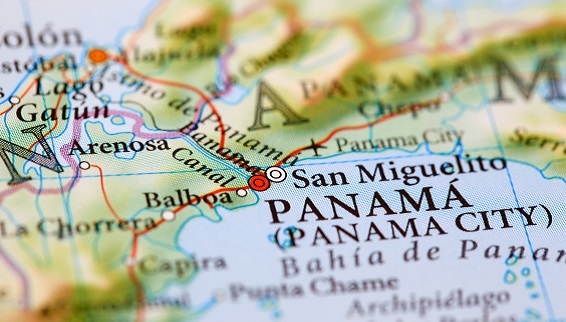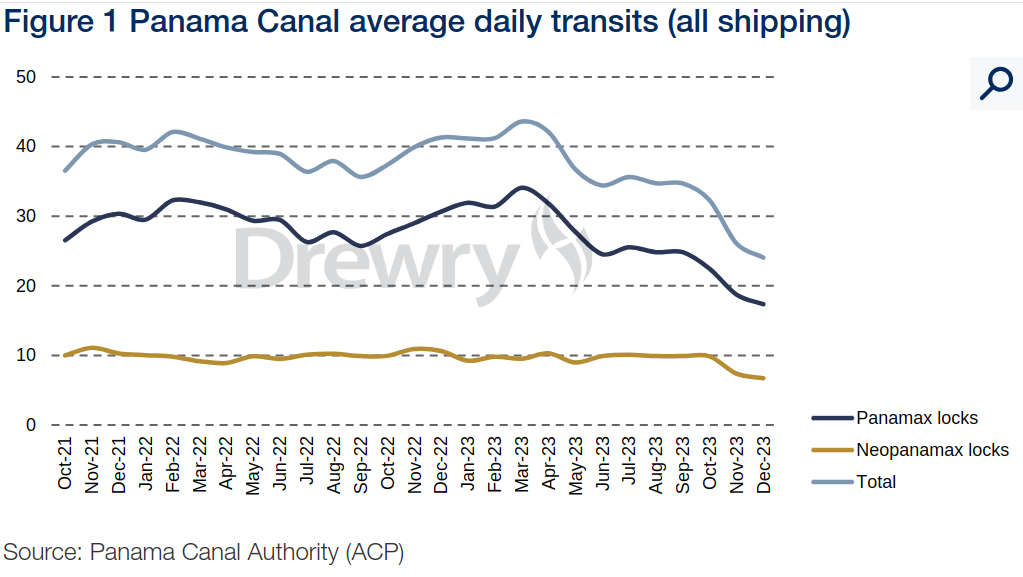
Containerships are proving resilient amidst the shifting dynamics of global trade routes, particularly at the Panama Canal. While the focus often turns to the Suez Canal, the Panama Canal is experiencing a notable reconfiguration in its traffic patterns.
Data from the Panama Canal Authority (ACP) reveals a decline in total transits across commercial shipping sectors, as depicted in Figure 1. However, containerships are bucking the trend, maintaining their daily transit averages despite challenges in other sectors.
The ACP has been compelled to implement measures to safeguard the canal’s watershed, a vital water source for half of Panama’s population. Since March 2023, the ACP has progressively reduced capacity through draft and daily transit restrictions.
Unusual climatic conditions, including higher temperatures in the Atlantic Ocean, the El Niño phenomenon, and a delayed rainy season, have led to a decrease in canal usage. Some vessels are even forced to lower cargo weight during transit.

December 2023 data from the ACP indicates a 25% decrease in monthly transits compared to October 2023, with only 746 transits recorded. This marks a substantial 42% year-over-year decline from December 2022 figures.
Currently, vessels traversing the Neopanamax locks face draft limitations of up to 44 feet, a significant reduction from the normal 50-foot cap. For containerships, this reduction in draft translates to an estimated loss of 350 TEU capacity for every foot, potentially impacting payload capacity by around 2,000 TEU for the largest containerships.
In a surprising move on December 15, 2023, the ACP decided to increase daily transits to 24 per day, up from 22, reversing an earlier decision to reduce transit slots. However, this remains lower than the 35-40+ daily transits observed before last year’s restrictions.

Containerships, benefiting from a pre-booking system that minimizes delays and avoids expensive transit auctions, have seen their share of total monthly transits increase to 30.6% in December. This marks a nearly 5-percentage point rise from October, highlighting their resilience amid the changing landscape.

While challenges persist, containerships are navigating the complexities, securing slots more easily as other sectors, notably dry bulk, vacate the route. The Panama Canal, a crucial link in global trade, continues to adapt to evolving circumstances.
Source: Drewry
